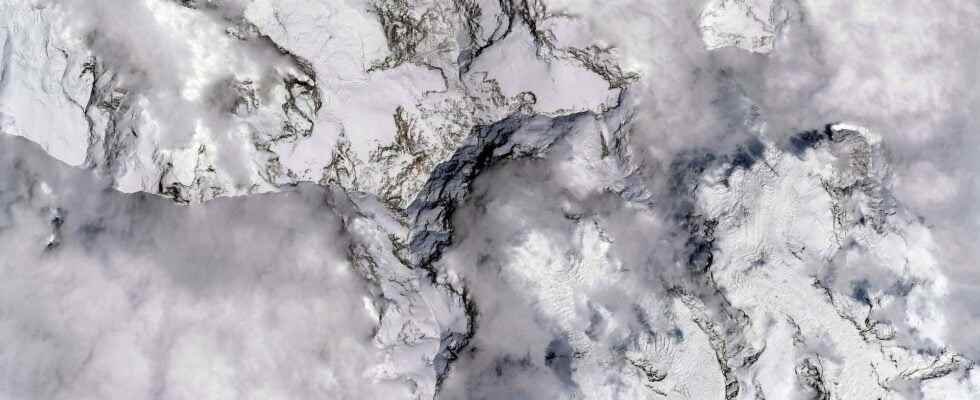You will also be interested
[EN VIDÉO] Greenland’s glaciers are melting at high speed The Helheim glacier – here in full calving, understand, in full production of icebergs – is one of the three largest in Greenland.
Even the highest glacier in the world is not spared from global warming. A study published in Nature, on February 3, 2022, reveals that Mount Everest would have lost a mass of titanic ice since the 1990s. On the South Col Glacier, the highest point of the mountain, the amount of ice that has disappeared over the past thirty years is comparable to 2,000 years of accumulation at the top of the glacier. A considerable loss, which could endanger the lives of myriads mountaineers rushing to the assault of Everest. But in the long term, the entire Himalayan population surrounding the mountains could suffer the consequences of this melting.
Everest in the hot seat?
With a peak of 8,849 meters, Mount Everest is the highest glacier in the world, as well as one of the most austere to climb. If the mountain has become a real tourist attraction since the first successful ascent by Edmund Hillary and Tanzig Norgay in 1953, attempting to set foot on the ” roof of the world” turns out to be a real test. Compared to the number of successful ascents to date, around 4,000, relatively few scientific experiments have come close to the “death zone”, at 8,000 meters, where the atmospheric pressure drops to 356 millibars and oxygen is becoming dangerously rare.
In April and May 2019, an expedition initiated by the National Geographic and Rolex’s Perpetual Planet led researchers from the University of Maine to study geological, biological and even meteorological data on the Nepalese side of the glacier, at the level of the South Col Glacier. Analysis of data available since the 19thand century highlights a change in the amount of ice present on several mountains of the Himalayan range since the 1860s. But a real turning point has existed since the 1990s, during which the European Center for weather forecast in the medium term (ECMWF) already noted an increase in temperatures in Asia and on the Tibetan plateau.
The researchers installed two weather stations at 7,945 and 8,430 meters above sea level, as well as a drilling mechanism to extract nearly 10 meters of ice from the summit. By coupling this field work with data analysis through photogrammetry, i.e. the modelization of the evolution of the terrain through photographsthe scientists of the expedition were able to estimate the amount of ice melted since the 1990s, equivalent to 2,000 years of accumulation of said ice.
Consequences on biodiversity and populations
The study explains that this phenomenon, caused by warming temperatures in this region of the world, could impact human and animal populations in the short and long term. Initially, mountaineers and Sherpas could suffer the effect of weakening snow and ice masses, increasing the frequency of avalanches. With 800 “climbers” having reached the summit in 2018, the melting ice could increase the number of deaths of amateurs and professionals trying their hand at climbing. basecamp Khumbupositioned at 5,300 meters and welcoming nearly 1,000 mountaineers annually, could be destabilized.
The melting of glaciers is a major problem, impacting many mountain ranges around the world, from Alaska toAntarctic. The only solution is the containment of the current climate crisis, to which the leaders of different countries responded at COP26 by renaming nine ice cream parlors located in the Getz Barrier, Antarctica.
Interested in what you just read?
